OTHELLO 🦷 dedicated to the study of art history
Last active 60 minutes ago
Don't wanna be here? Send us removal request.
Photo

Requiem with a marginal dragonfly book of hours, Bruges or Ghent 15th century.
Beinecke Rare Book and Manuscript Library, MS 287, fol. 161v
4K notes
·
View notes
Text
queue
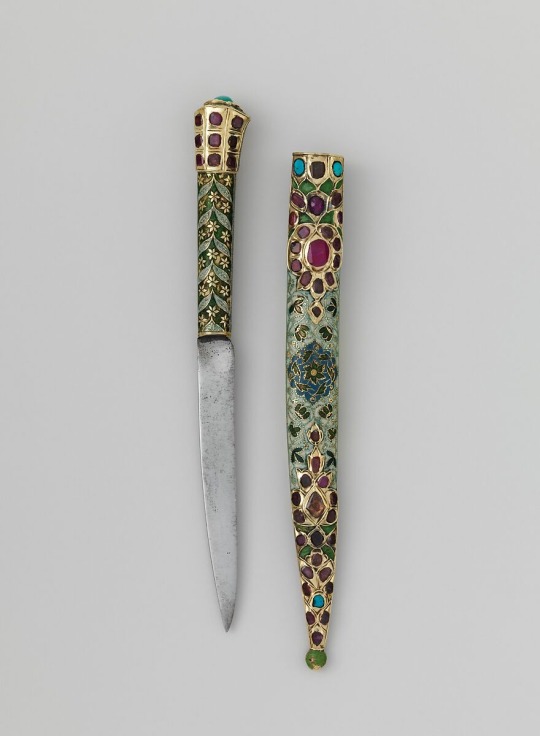

Turkish Knife and Sheath silver, gilded, enameled, and set rubies over foil and turquoise. ca. 1660-1700
967 notes
·
View notes
Text

C. B. Birch: ‘Goddess of the Sun’ for Hancock’s of London (1855)
2K notes
·
View notes
Text

‘Small Knife with Sheath’ The Ottoman Empire, 18th century. Material: steel, silver, bone, horn, mother-of-pearl, enamel [source]
3K notes
·
View notes
Text
central/south asian applied art
two bowls, trefoil-shaped¹ box with lid, and thumb ring, approximately 17th / 18th century.
all were carved from nephrite² and decorated with gold, jadeite², sapphires³ and rubies⁴ in symmetrical, floral patterns.
mughal. the mughal empire (1526–1857) encompassed the regions of today's northern india and parts of central asia/turkestan.
numbered terms
1: trefoil is a shape popularised by its use in gothic churches. it is composed of three overlapping rings in a triangular shape. trefoils can also have stretched, sharpened "rings". the nephrite box above is a mixture of both styles.
2: jade is a gemstone that can come in two forms: jadeite, a popular bright green gem, and the darker green to black nephrite. like most gem stones, color variations are possible: the jadeite is a light green, the nephrite that these pieces were carved from is milky white!
3: sapphire is a popular and expensive gemstone, usually a deep, royal blue. (but sapphires can come in red and yellow too!) i only have these pictures to go from, but my best guess is the sapphire is the teardrop-shaped gem in the front center of the thumb ring.
4: ruby also is a popular and expensive gemstone, that are always red. while the shade of red can vary from deep burgundy to more orange or pink, these rubies are a classic bright red.
othello's notes
i have a ton to learn about this! i worked with central asian jewelery in my recent internship, but didn't get to branch out into mughal art. most of the info above is pulled from the OG poster, my own knowledge, and supplemented with some wikipedia searches.
please, if you do notice mistakes or missing information, please don't be afraid to let me know and i will correct it 🤍
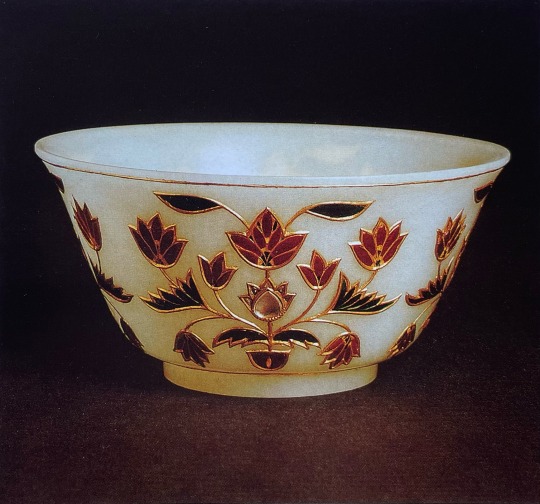
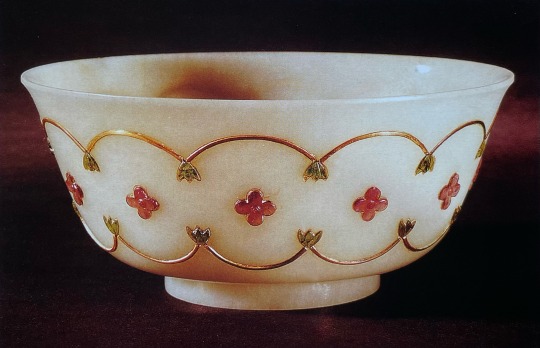

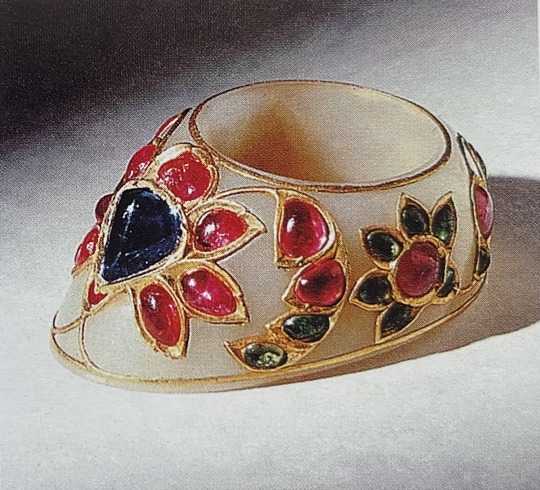
17th/18th-century Mughal styled bowls, box + cover, and thumb ring all carved from nephrite and enameled with gold, jade, sapphires and rubies.
#art#art history#17th century#18th century#gemstones#south asia#south asian art#turkestan#turkic art#central asia#central asian art#jade#nephrite#jadeite#sapphire#ruby#gold#indian art#applied art#museology
307 notes
·
View notes
Text
welcome to my art history blog
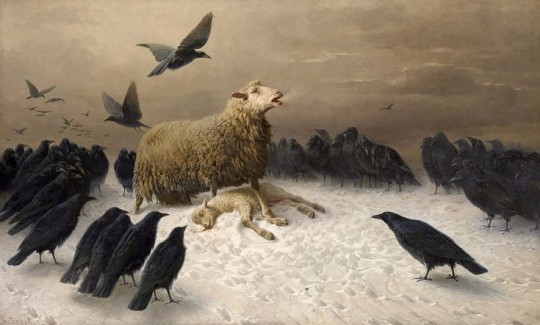
L'Orphelin, souvenir d'Auvergne
("The Orphan, memory of Auvergne), August Friedrich Schenck, 1885. Displayed at Musée d'Orsay, Paris
about the blog 🦷
i'll be sharing visual and applied art (sometimes literature) through the ages, focusing on my current interests and studies (list below the cut). my ask box is always open if you would like to share pieces you love, or art topics you're passionate about!
current interests and studies 🦷
victorian era paintings and literature
gothic statues and architecture
byzantine art
central asian jewelery and weaponry
visual and applied art from west asia
islamic art, mosque patterns
preserving palestinian art/culture
preserving saharawi art/culture
associated languages: ancient greek, latin, persian, arabic
about me 🦷
i'm othello, a 20 year old student of museology in leipzig. our university focuses largely on european art from the 2nd millenia, so i have created this blog to concentrate my interests in branching out from this (see: current interests and studies above).
colonialism and facism have no place in modern museums, or on this blog. i stand with palestine and western sahara in their right to self-determination, their right to return, and their right to live & share their culture 🇵🇸🇪🇭
2 notes
·
View notes